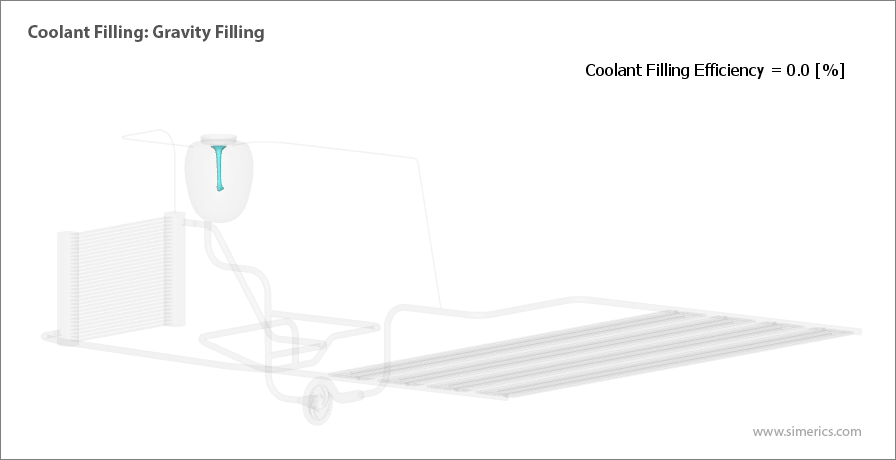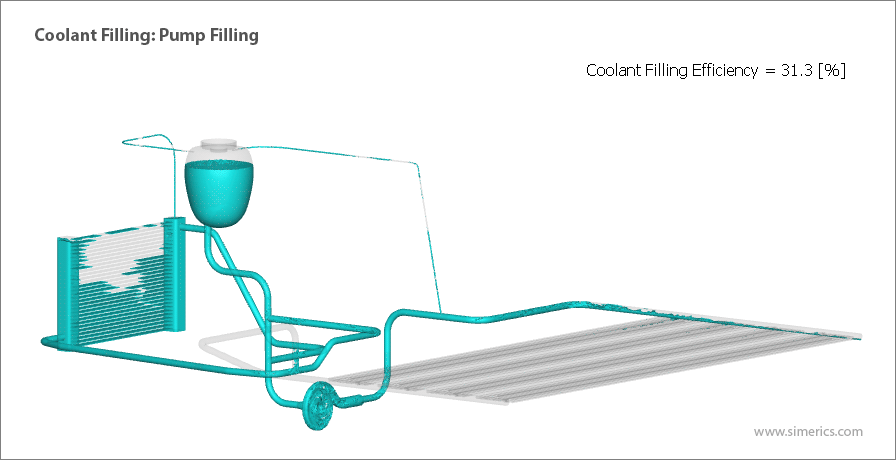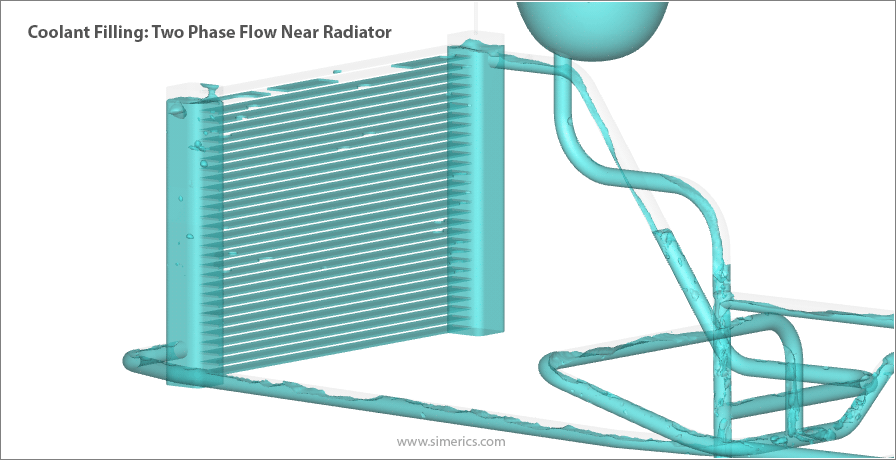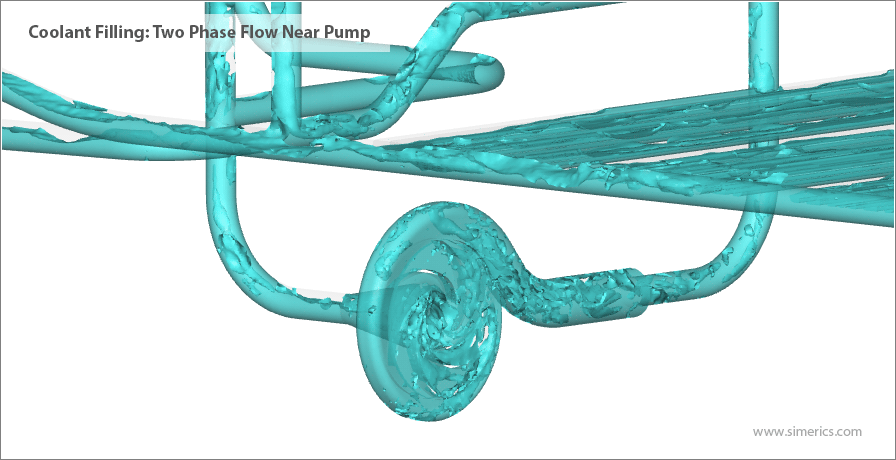Battery (BEV) Coolant Filling and De-aeration:
Trapped air bubbles inside coolant systems have adverse effect on the cooling performance. Hence, it is imperative to ensure an effective filling and de-aeration of the coolant system in order to have less air left before the operation of the coolant system. A 3D-CFD simulation acts as a virtual test bed to predict the filling efficiency, identify air trapped locations, pump power requirements and hence helps to optimize the coolant system layout, pipings and filling processes.
The fast and robust multiphase solver in Simerics-MP+ can simulate various processes including gravity filling, pump-on filling and deaeration at different pump speeds ensuring good conservation of air and coolant mass.
Simerics-MP+ allows to optimize pump on/off strategies in combination with multi- directional valve opening and closing. The explicit VOF based multiphase solver in Simerics-MP+ takes considerably less run time with its automated meshing and dynamics modules for pumps and valves.
More details can be found in the following paper.
Technical Paper:
1. Tao, M., Slike, J., Bhagat, M., Srinivasan, C. et al., “Numerical Modelling of Coolant Filling and De-aeration in a Battery Electric Vehicle Cooling System,” SAE Technical Paper 2021-01-0205, 2021, doi:10.4271/2021-01-0205.
Discriminators:
- Coolant filling test can be simulated for Engine or Battery coolant systems in ICE/BEV/HEV vehicles
- Different filling and de-aeration processes can be easily automated to optimize filling strategy
- Fast and robust explicit VOF multiphase solver
- Accurate capture of sharp water-air interface with less diffusion
- Template mesh for pipes and valves
- Fast turnaround time
- Ease of use
Design Issues/Benefits:
- Identify location of trapped air in critical components e.g. radiator, pump, battery pack, engine cooling jacket etc.
- Predicts filling time, filling efficiency and pump power requirements
- Validated the simulation methodology with test for different filling strategies
- High speed pump-on filling can be simulated
- Multi-directional valve dynamics can be captured







